Calorie restriction modulates the transcription of genes related to stress response and longevity in human muscle: The CALERIE study
- PMID: 37823711
- PMCID: PMC10726900
- DOI: 10.1111/acel.13963
Calorie restriction modulates the transcription of genes related to stress response and longevity in human muscle: The CALERIE study
Abstract
The lifespan extension induced by 40% caloric restriction (CR) in rodents is accompanied by postponement of disease, preservation of function, and increased stress resistance. Whether CR elicits the same physiological and molecular responses in humans remains mostly unexplored. In the CALERIE study, 12% CR for 2 years in healthy humans induced minor losses of muscle mass (leg lean mass) without changes of muscle strength, but mechanisms for muscle quality preservation remained unclear. We performed high-depth RNA-Seq (387-618 million paired reads) on human vastus lateralis muscle biopsies collected from the CALERIE participants at baseline, 12- and 24-month follow-up from the 90 CALERIE participants randomized to CR and "ad libitum" control. Using linear mixed effect model, we identified protein-coding genes and splicing variants whose expression was significantly changed in the CR group compared to controls, including genes related to proteostasis, circadian rhythm regulation, DNA repair, mitochondrial biogenesis, mRNA processing/splicing, FOXO3 metabolism, apoptosis, and inflammation. Changes in some of these biological pathways mediated part of the positive effect of CR on muscle quality. Differentially expressed splicing variants were associated with change in pathways shown to be affected by CR in model organisms. Two years of sustained CR in humans positively affected skeletal muscle quality, and impacted gene expression and splicing profiles of biological pathways affected by CR in model organisms, suggesting that attainable levels of CR in a lifestyle intervention can benefit muscle health in humans.
Keywords: FOXO; calorie restriction; heat shock response; inflammation; mitochondrial biogenesis; skeletal muscle; splicing.
© 2023 The Authors. Aging Cell published by Anatomical Society and John Wiley & Sons Ltd. This article has been contributed to by U.S. Government employees and their work is in the public domain in the USA.
Conflict of interest statement
None declared.
Figures
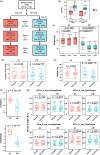
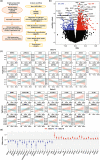
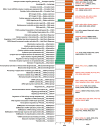
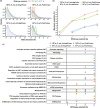

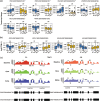
References
-
- Altieri, P. , Spallarossa, P. , Barisione, C. , Garibaldi, S. , Garuti, A. , Fabbi, P. , Ghigliotti, G. , & Brunelli, C. (2012). Inhibition of doxorubicin‐induced senescence by PPARδ activation agonists in cardiac muscle cells: Cooperation between PPARδ and Bcl6. PLoS One, 7(9), e46126. - PMC - PubMed
-
- Ando, K. , Tong, L. , Peng, D. , Vázquez‐Liébanas, E. , Chiyoda, H. , He, L. , Liu, J. , Kawakami, K. , Mochizuki, N. , Fukuhara, S. , Grutzendler, J. , & Betsholtz, C. (2022). KCNJ8/ABCC9‐containing K‐ATP channel modulates brain vascular smooth muscle development and neurovascular coupling. Developmental Cell, 57(11), 1383–1399. e1387. - PubMed
Publication types
MeSH terms
Grants and funding
LinkOut - more resources
Full Text Sources
Research Materials

